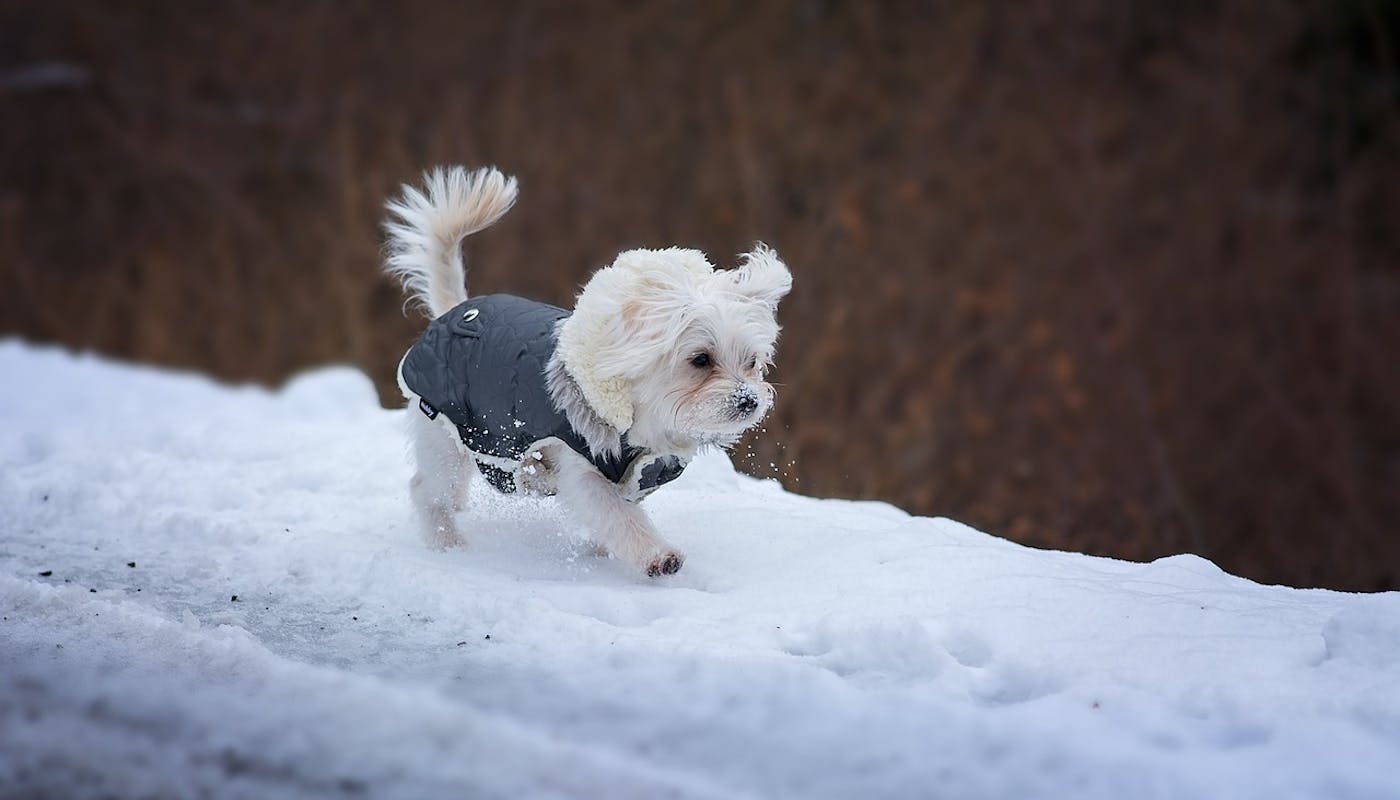How To Keep Your Dog Comfy in Winter
Icy paws, aching joints, and frostbitten ears – just some of the troubles that winter brings. Read on for top tips on protecting your pooch against cold-weather blues.
Stay Warm Indoors
Most dogs will be fine on their regular bed for winter; as the temperature drops, you might add a soft blanket to help them stay cozy.
If you want to keep your dog comfy and warm this winter, here are some suggestions:
- Draughty room? Add draught excluders to prevent night-time chills.
- Dog always curls up like a donut? They’re probably feeling the cold. Add a layer of insulation beneath their bed, like a camping mat or a self-warming pet mat (no electricity connection required). You can purchase pouch-style pooch beds for dogs who love to be tucked in!
- Cold, natural stone floors? Consider a heated mat to place beneath the dog bed. When it’s time to replace your floors, choose quick-fitting wood or laminate (not stone) and always add thick underlay.
- Dog starting to feel the cold in their joints? For senior or arthritic dogs, we recommend swapping their bed for a specialist alternative. Memory foam is a great choice for supporting tired joints.
Upcycle an Old Duvet:
- Fold a duvet into quarters and use a long needle to make knots that hold the layers together (like an old-fashioned quilt).
- Make a fabric cover by cutting 2 rectangles which are 1” larger than the folded duvet on all sides.
- Sew right-sides-together, leaving a gap for turning the right way out.
- Push the folded duvet inside and hand-sew the gap closed.
You can use this as a floor-cushion to put underneath your dog’s regular bed, or to keep in the living room for day-time naps. If you used a single duvet, it should fit into a regular washing machine for freshening up!
Stay Warm Outdoors
In cold temperatures, dogs shouldn’t be outdoors for extended periods. 45°F is the temp to remember – that’s when you should limit or stop walks for dogs who aren’t used to the cold. Obviously this advice is location and dog dependent, a Malamute in Alaska will be much more comfortable in this temperature compared to a LA based chihuahua. The first sign of frostbite is skin which is very cold and can be painful when touched. It’s most likely to start in the paws, nose or tail.
To avoid frostbite and hypothermia, you should keep your dog indoors for most of the cold season. If it’s mild enough for a short or normal walk, consider some extra precautions:
- Because you’re indoors, where it’s heated, the sudden temperature drop can be shocking. Let your dog run in the yard for a few minutes and observe them in case of shivering or icy paws. It helps them to acclimatize to the day’s weather, too.
- Protective clothing can help your dog to survive (and enjoy) cold walks – just like you! If your dog’s used to wearing a jumper or coat, it’s time to fit them with a thermal dog coat. The best ones are adjustable, with waterproofing and chest coverage.
- Snow boots are gaining traction for dogs! Look for boots with a non-slip sole. You might find your dog surprisingly willing to wear them. They protect paws against de-icer as well as snow and ice, which can form compacted balls between the toes. (Bonus: they look adorable!)
- If your dog prefers naked paws, check them when they get home. You can dip them into warm water to get rid of ice and de-icer.
- A couple more practical considerations: If walking in the dark, fit your dog with a high-vis collar or jacket. Choose a route with a cleared path, and never let your dog run onto a lake which appears to be frozen solid. Never let your dog walk on salted paths, the chemicals used can sometimes burn their pads.
Further Reading
Get more advice about healthy winter walks with your dog/learn/dog-lifestyle/winter-walkies-tips-and-advice. If you’ve never tried snow boots, learn everything we know so far/learn/dog-health/are-dog-boots-necessary. And get ready for winter storms with our advice/learn/dog-training/how-to-keep-your-dog-calm-in-a-storm.
